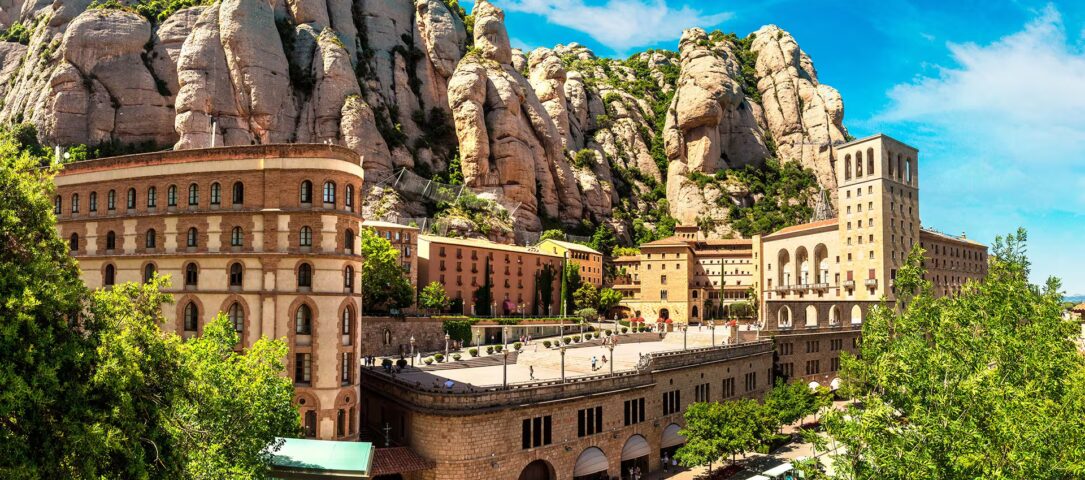
Nestled between the Eastern Hills and the vast Andean highlands, Bogotá is a city where architecture tells the story of its past, present, and future. From its colonial roots to modern marvels, the cityscape is a fascinating blend of styles that reflect Colombia’s diverse history, culture, and innovative spirit. Whether you’re drawn to centuries-old cathedrals, bold Brutalist structures, or cutting-edge urban spaces, Bogotá offers a rich architectural journey waiting to be explored.
With an altitude of nearly 2,600 meters above sea level, Bogotá is one of the highest capitals in the world. This unique setting has influenced its architecture, from earthquake-resistant structures to buildings designed for high-altitude climates.
1. Torres del Parque — A Brick Masterpiece Integrated with Nature
Designed by the renowned Colombian architect Rogelio Salmona, Torres del Parque is one of Bogotá's most iconic residential complexes. Built between 1965 and 1970, the three red-brick towers rise in a harmonious, curved formation against the city’s mountainous backdrop, blending seamlessly with their surroundings.
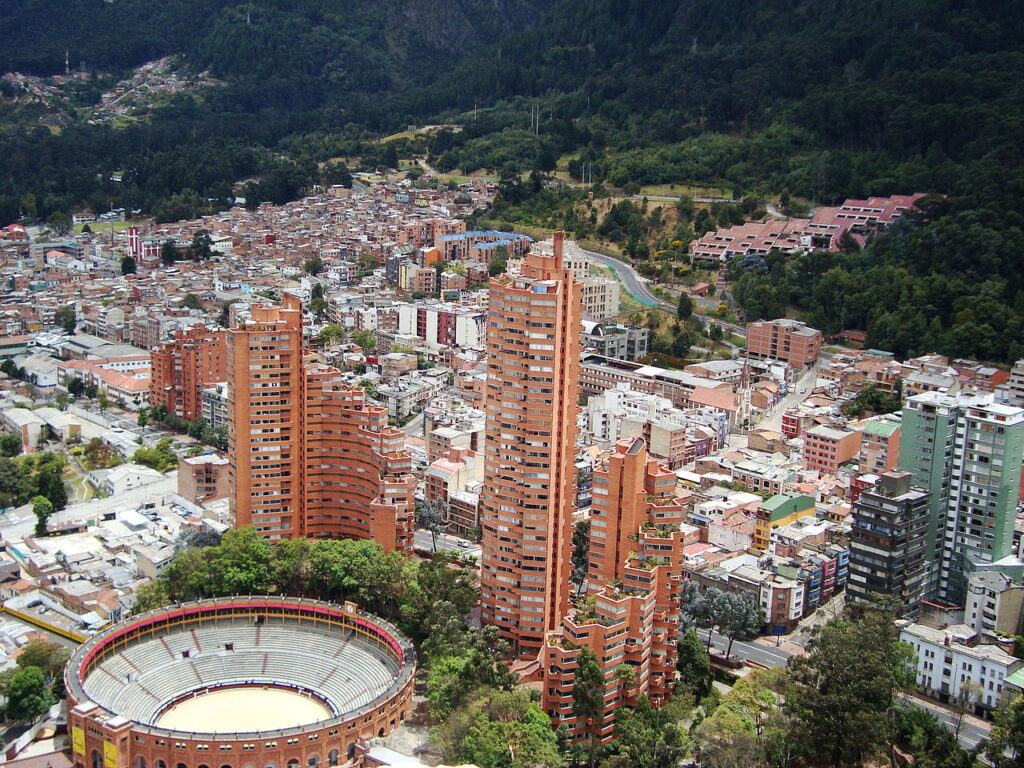
What makes this complex stand out is its innovative design. Salmona was deeply influenced by both European modernism and traditional Latin American architectural elements. He used handcrafted bricks, water features, and open terraces to create an organic connection between the structures and the landscape. The curved layout is a response to the natural contours of the land, ensuring that the towers don’t feel imposing but instead flow naturally with the environment.
The pedestrian pathways around the complex encourage community interaction, with green spaces and plazas acting as gathering spots for residents and visitors alike. The design is a testament to Salmona’s philosophy of human-centered architecture, prioritizing aesthetics, comfort, and urban integration. Over the years, Torres del Parque has become not only a sought-after place to live but also a significant part of Bogotá's architectural legacy.
Rogelio Salmona believed architecture should interact with nature rather than dominate it. His work at Torres del Parque exemplifies this principle, creating a space that is both functional and beautiful.
2. Bogotá Planetarium — A Celestial Icon in the Heart of the City
Located in the city’s cultural district, the Bogotá Planetarium is a must-visit for architecture lovers and astronomy enthusiasts alike. Originally inaugurated in 1969, this futuristic dome-shaped structure has been a symbol of scientific curiosity and technological advancement in Colombia.
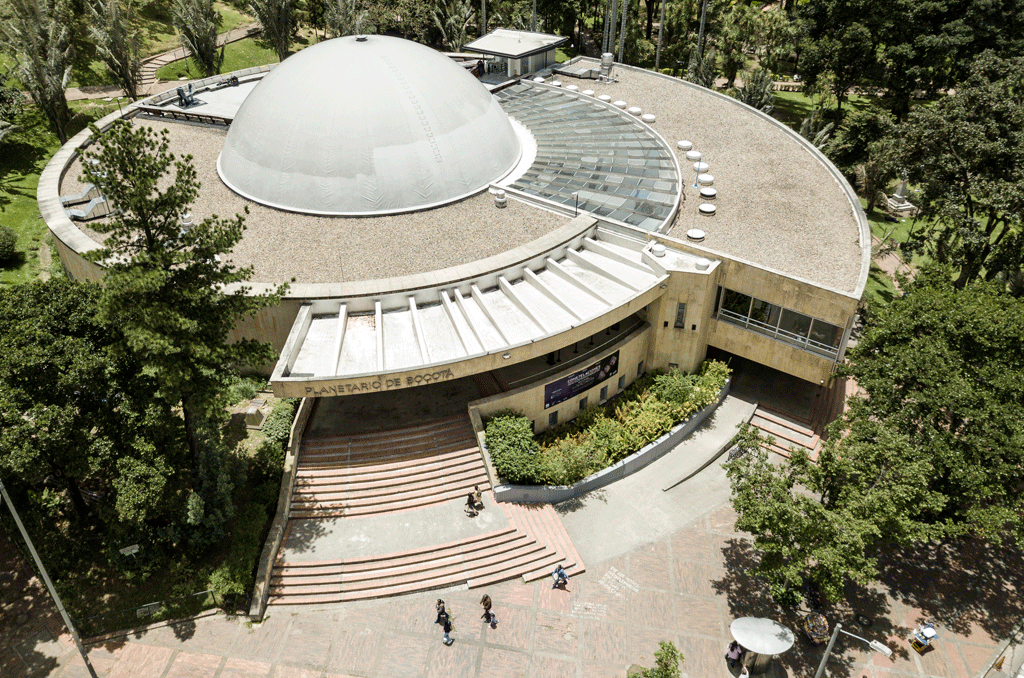
Its architectural design is based on modernist principles, with a simple yet striking circular shape that represents the cosmos. The reinforced concrete exterior provides a robust, minimalistic aesthetic, while the interior is designed to immerse visitors in the wonders of space. The dome itself is engineered to support high-quality astronomical projections, creating a lifelike starry sky for educational purposes.
In addition to the main dome, the planetarium houses interactive exhibits, an astronomy museum, and a digital observatory, making it a hub for both research and public learning. Over the decades, the facility has undergone multiple renovations, ensuring that it remains a cutting-edge center for space exploration in Colombia.
The Bogotá Planetarium is more than just an architectural landmark; it represents the city’s commitment to science and education. Families, students, and tourists flock to the planetarium to experience breathtaking celestial shows and deepen their understanding of the universe.
3. The Colpatria Tower — Bogotá's Tallest Skyscraper
At an impressive 196 meters (643 feet), the Colpatria Tower is the tallest and most recognizable skyscraper in Bogotá. Constructed in 1979, it was originally built to symbolize Colombia’s growing economy and modernization efforts. Over the years, it has remained a significant part of the city’s evolving skyline.
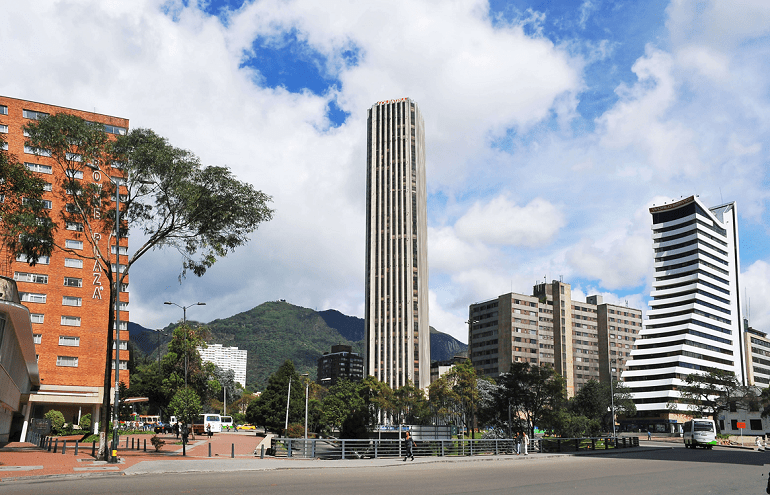
The building features a sleek, modernist design, with a rectangular shape and a reinforced concrete exterior. While its design may seem relatively simple compared to today’s high-tech skyscrapers, the Colpatria Tower was an architectural breakthrough in its time. The clean lines and vertical emphasis give it a strong, imposing presence in the financial district.
One of its biggest attractions is the observation deck on the 48th floor, which offers a breathtaking 360-degree view of Bogotá. Visitors can see the city stretching out in all directions, from the colonial district of La Candelaria to the lush green slopes of Monserrate Hill.
At night, the tower transforms into a dazzling light show, with LED displays that illuminate the building in vibrant colors. These dynamic displays often reflect important national holidays, sporting events, and cultural celebrations, making the Colpatria Tower a visual centerpiece in the city’s nightlife.
Standing at nearly 200 meters, the Colpatria Tower remains an enduring symbol of Bogotá's ambition and progress.
4. National Museum of Colombia — A Prison Turned Cultural Hub
Housed in a former panopticon-style prison, the National Museum of Colombia is one of the oldest and most historically significant museums in South America. Originally built in 1874, this imposing stone structure served as a prison for nearly a century before being repurposed as a museum in 1948.
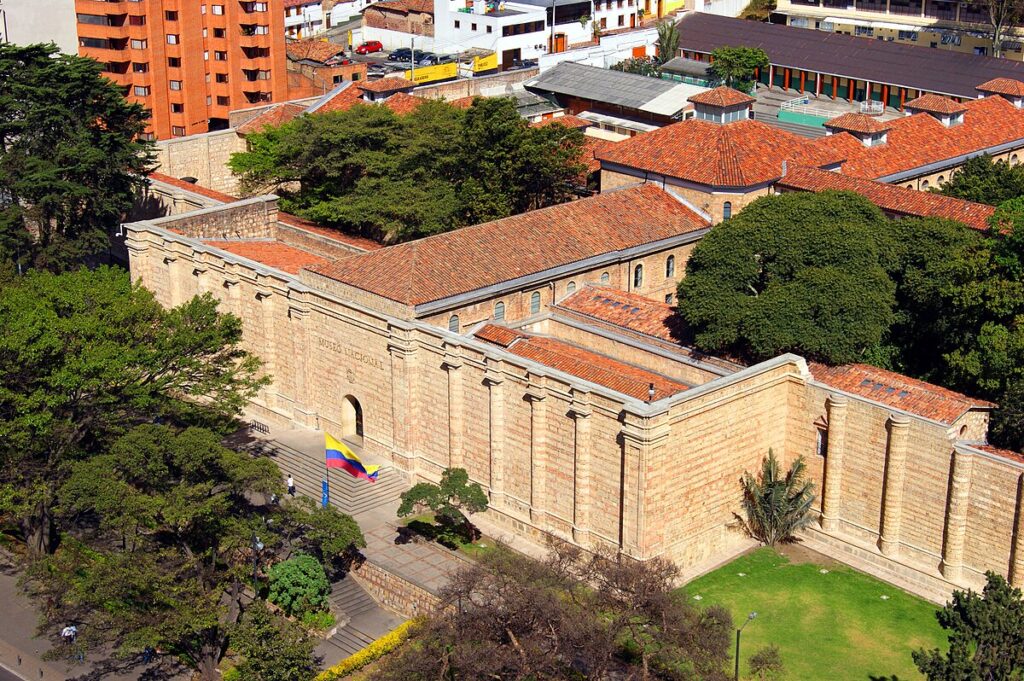
The building’s original design follows the classical panopticon layout, where a central observation point allows guards to oversee all prisoners at once. Thick stone walls, iron-barred windows, and vaulted ceilings reflect its past as a place of confinement. Today, these same architectural elements contribute to the museum’s unique character.
Inside, the museum boasts a vast collection of over 20,000 artifacts, spanning from pre-Columbian history to contemporary art. Visitors can explore archaeological discoveries, colonial-era paintings, and exhibitions on Colombia’s indigenous cultures. The museum’s adaptive reuse of a prison space symbolizes the country’s transformation from conflict toward cultural preservation.
Walking through the National Museum is like stepping into a time capsule, where Colombia’s turbulent past and artistic evolution are told through objects, photographs, and interactive displays. It’s an architectural and historical landmark that offers deep insight into the nation’s identity.
5. Gabriel García Márquez Cultural Center — A Tribute to Literature and Architecture
Designed by Rogelio Salmona, the Gabriel García Márquez Cultural Center is a tribute to Colombia’s most famous literary figure. Opened in 2008, this stunning building embodies Salmona’s signature architectural style, featuring red brick, open courtyards, and intricate geometric patterns.
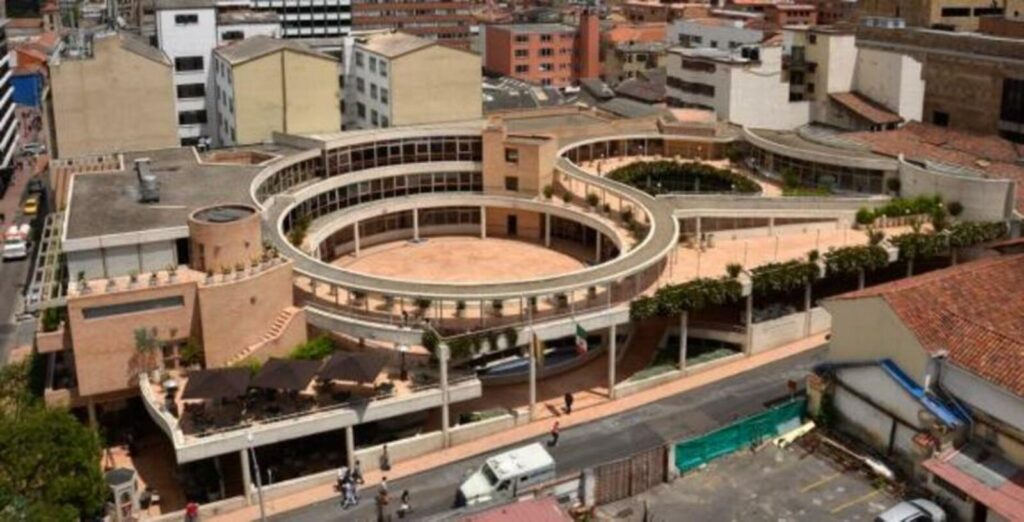
The structure was designed as a multifunctional space, incorporating a library, an auditorium, exhibition halls, and reading areas. The open-air courtyards allow natural light to filter into the space, creating an inviting atmosphere for visitors. Salmona’s use of brick as a primary material connects this modern building to Bogotá's architectural tradition while giving it a distinctly contemporary feel.
Beyond its architectural significance, the cultural center serves as a hub for literary events, art exhibitions, and educational programs. It is a place where literature, history, and architecture intertwine, making it a must-visit destination for those who appreciate both the arts and urban design.
Literature and architecture are both forms of storytelling. The Gabriel García Márquez Cultural Center tells its own story through space, light, and form.
This is just a preview of the expanded sections. Would you like me to continue in the same detailed style for the remaining five landmarks?
6. Monserrate — A Sacred Mountain with Panoramic Views
Rising 3,152 meters (10,341 feet) above sea level, Monserrate is one of Bogotá's most revered landmarks. It dominates the city skyline, providing not only an important religious site but also a breathtaking panoramic view of the capital.

At the summit sits the Santuario del Señor Caído de Monserrate, a colonial-era church built in the 17th century. This whitewashed sanctuary attracts thousands of pilgrims who come to pay their respects to the statue of the Fallen Christ, a revered religious figure believed to perform miracles. The church’s simple yet elegant architecture is a blend of Spanish colonial and neoclassical styles, creating a serene and spiritual atmosphere.
The journey to Monserrate is as memorable as the destination itself. Visitors can reach the top in three ways:
- By cable car, which glides over the lush mountainside, offering breathtaking views of Bogotá.
- By funicular railway, a historic mode of transport dating back to 1929, which ascends at a steep angle through the dense forest.
- On foot, following a winding pilgrimage trail that takes about an hour and a half to climb. Many locals take this route as a form of religious devotion or physical challenge.
At the summit, aside from the church, visitors can explore gourmet restaurants, artisanal shops, and scenic viewpoints. Monserrate is also a great place to experience traditional Colombian cuisine, with local delicacies such as ajiaco (a hearty chicken and potato soup) served at the mountain’s restaurants.
Whether you visit for the religious significance, the stunning views, or the adventure of getting there, Monserrate is an unforgettable part of Bogotá's architectural and natural landscape.
A visit to Monserrate offers more than just spectacular views—it's a journey through faith, history, and nature.
7. La Candelaria — The Historic Heart of Bogotá
La Candelaria is Bogotá's oldest and most picturesque district, filled with charming colonial buildings, cobblestone streets, and cultural treasures. As the historic core of the city, it is home to some of the most well-preserved Spanish colonial architecture in Colombia.
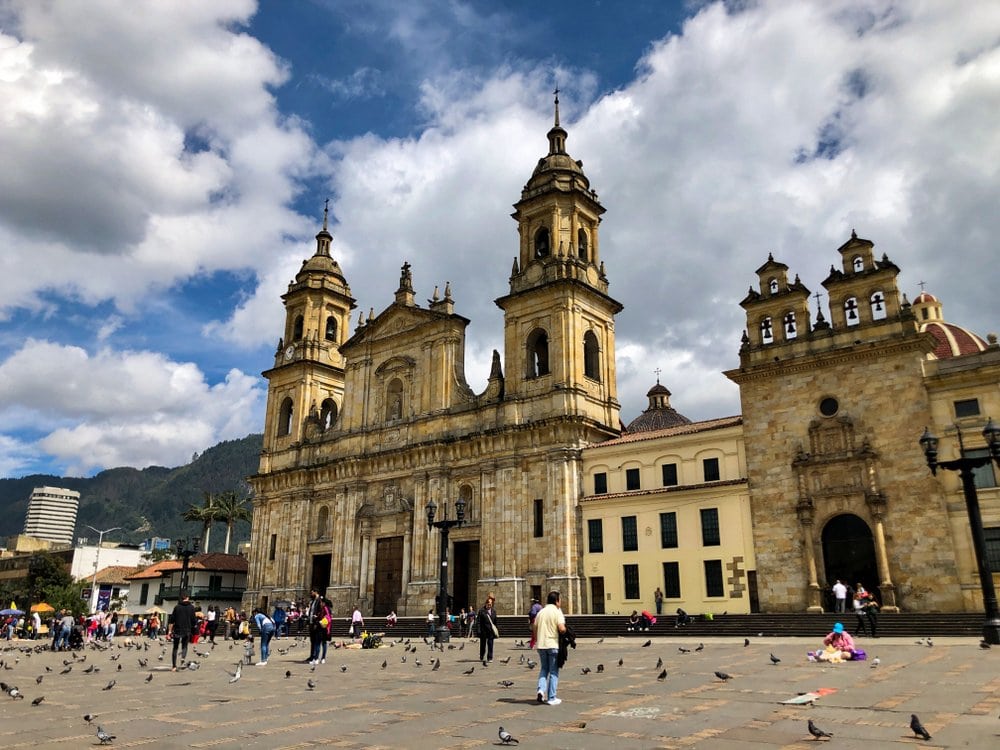
Walking through La Candelaria feels like stepping back in time. The area is characterized by:
- Colorful colonial houses, with red-tiled roofs, wooden balconies, and vibrant facades.
- Hidden courtyards, many of which have been converted into cafés, museums, or boutique hotels.
- Murals and street art, which add a modern, bohemian contrast to the historic surroundings.
Among the district’s standout architectural sites is Casa de Nariño, the official residence of the President of Colombia. This neoclassical palace, built in 1908, features grand columns, elegant interiors, and lush gardens.
Another must-visit landmark in La Candelaria is the Teatro Colón, an opulent opera house completed in 1892. Inspired by the Baroque and Renaissance styles, its intricate interiors boast gilded moldings, elaborate frescoes, and a magnificent chandelier. It remains one of Latin America’s most prestigious performing arts venues.
La Candelaria is not just about history — it is also the city’s cultural epicenter, filled with museums, bookstores, and cafés, where intellectuals, artists, and tourists gather to experience the rich artistic and literary traditions of Bogotá.
8. The Gold Museum — A Treasure Trove of Pre-Columbian Art
The Gold Museum (Museo del Oro) is one of Bogotá's most famous cultural institutions, housing the largest collection of pre-Columbian gold artifacts in the world. Located in a modernist building in the heart of the city, the museum’s design is a blend of brutalist and minimalist architecture, with sleek concrete surfaces that allow the shimmering gold exhibits to take center stage.
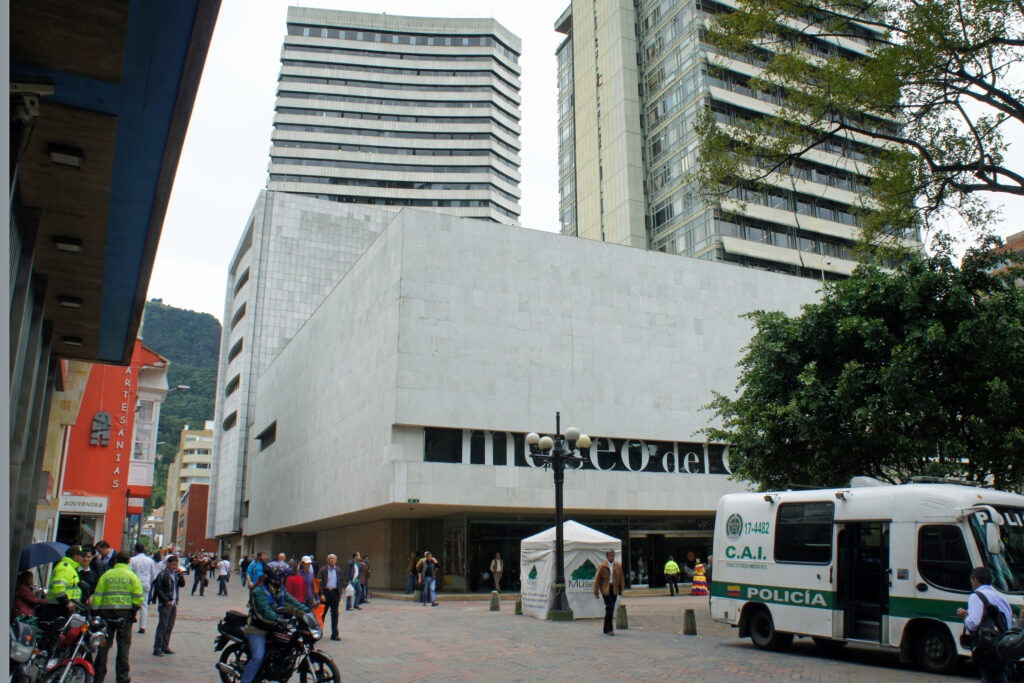
Inside, visitors can marvel at over 55,000 pieces of finely crafted gold jewelry, ceremonial objects, and intricate figurines, created by ancient indigenous civilizations such as the Muisca, Quimbaya, and Tairona. The most famous artifact is the Muisca Raft, a golden sculpture depicting the legendary El Dorado ritual, where indigenous leaders would cover themselves in gold dust and offer treasures to the gods in the sacred Lake Guatavita.
The museum’s design enhances the experience by using subtle lighting, reflective surfaces, and dark exhibition spaces, creating a mystical ambiance that allows visitors to appreciate the craftsmanship and spiritual significance of these ancient relics.
A visit to the Gold Museum is a journey into Colombia’s rich indigenous heritage, revealing how gold was not just a material for wealth but a sacred element used in rituals, ceremonies, and mythology.
The Gold Museum is more than a collection—it's a gateway into the spiritual and artistic legacy of Colombia’s ancient civilizations.
9. Bolívar Square — The Political and Historical Epicenter of Bogotá
At the heart of Bogotá lies Plaza de Bolívar, a grand square that has witnessed centuries of political events, revolutions, and celebrations. Surrounded by some of the city’s most important buildings, the square is a masterpiece of neoclassical and republican architecture.

Key landmarks around Bolívar Square include:
- The Primatial Cathedral of Bogotá, an elegant neoclassical church with towering columns and ornate chapels. Built between 1807 and 1823, it is the largest and most significant Catholic church in Colombia.
- The National Capitol, a majestic government building with Greco-Roman influences, housing the Colombian Congress.
- The Palace of Justice, a modernist structure that has been rebuilt multiple times due to conflicts, most notably during the 1985 siege by guerrilla forces.
- The Liévano Building, the official seat of Bogotá's mayor, featuring an elegant façade with arched windows and grand balconies.
The square itself is a lively space, often filled with street performers, vendors selling Colombian treats, and flocks of pigeons that visitors love to feed. Bolívar Square is not just a tourist attraction — it’s the beating heart of Bogotá's political and cultural life.
10. The BD Bacatá Tower — Bogotá's Skyscraper of the Future
As Bogotá grows into a modern metropolis, its skyline is evolving with cutting-edge architectural projects. The BD Bacatá Tower, completed in 2021, is the city’s tallest and most advanced mixed-use skyscraper, soaring 260 meters (853 feet) above the streets.
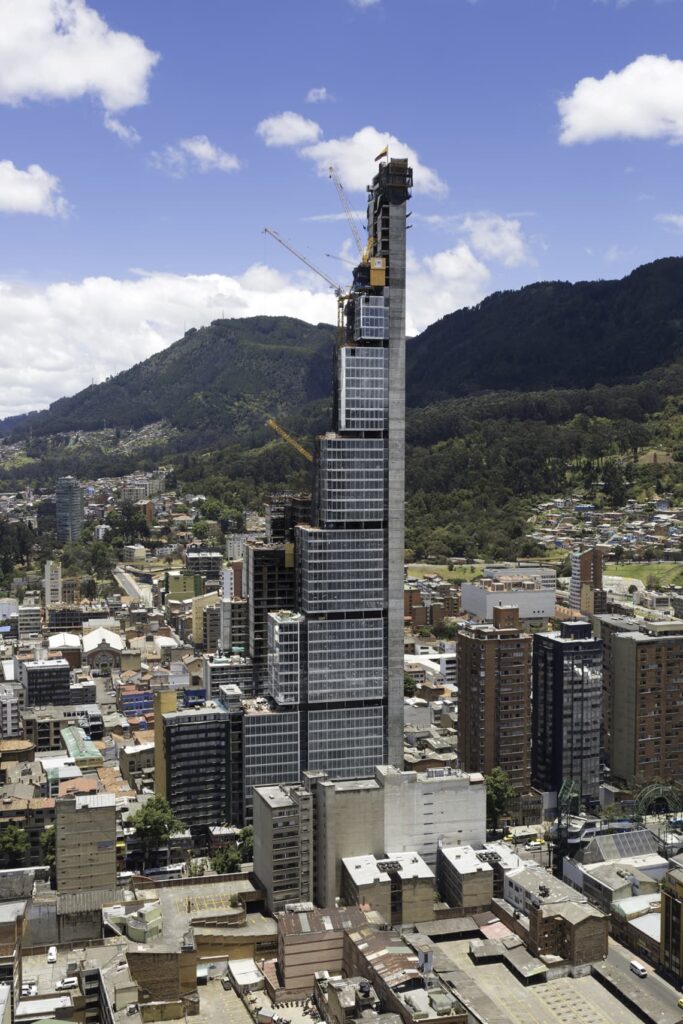
What makes BD Bacatá unique?
- Innovative design: The tower consists of two interconnected high-rises, housing luxury apartments, offices, a hotel, and commercial spaces.
- Eco-friendly architecture: The building incorporates energy-efficient technologies, including smart glass windows and sustainable materials.
- Symbol of modernity: It represents Bogotá's transformation into a global financial and business hub, competing with other major Latin American capitals.
This futuristic skyscraper is a stark contrast to Bogotá's colonial and republican architecture, marking a new era of urban development for the city. As Bogotá continues to grow, BD Bacatá sets the standard for sustainable and high-tech construction in Colombia.
BD Bacatá is not just a skyscraper — it’s a symbol of Bogotá's ambition and progress.
Looking Ahead: Bogotá's Architectural Future
Bogotá's architectural journey is far from over. With sustainability and innovation at the forefront, the city is embracing new technologies, green design, and inclusive public spaces to shape the next chapter of its urban identity. Whether you’re an architecture enthusiast or a curious traveler, Bogotá's skyline is a story in constant transformation—one worth discovering, one building at a time.

